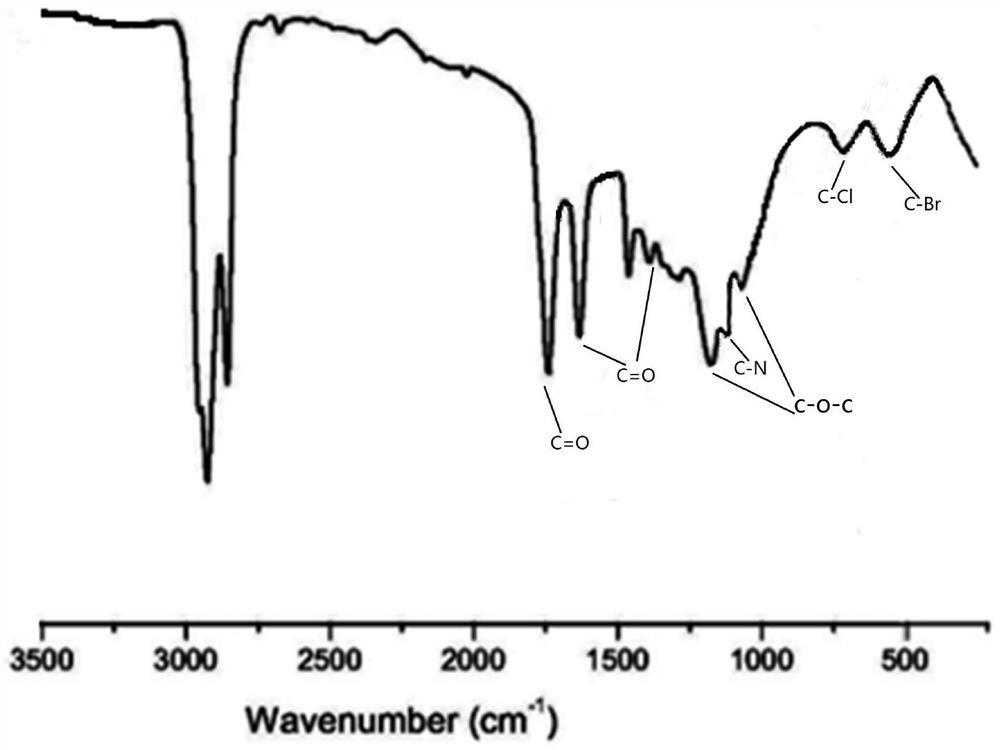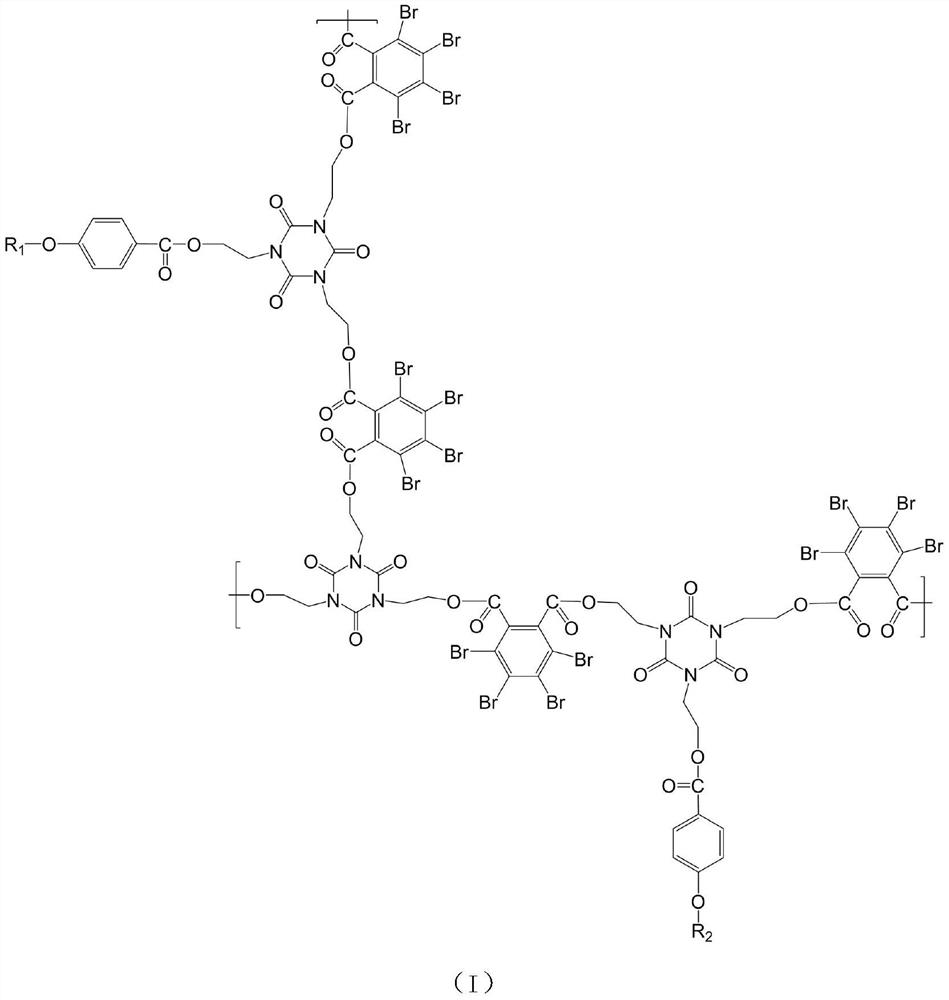Cross-linked polymer flame retardant and preparation method thereof
A technology of cross-linked polymers and flame retardants, which is applied in the direction of fire-resistant coatings, etc., can solve the problems of general flame-retardant effect, hinder wide application, reduce flame-retardant durability, etc., and achieve low cost, high yield, and high flame retardancy The effect of potency
- Summary
- Abstract
- Description
- Claims
- Application Information
AI Technical Summary
Problems solved by technology
Method used
Image
Examples
Embodiment 1
[0031] (1) Preparation of carboxyl-containing chlorinated paraffin 42: Dissolve 20 g of chlorinated paraffin 42 in 200 mL of acetone, stir to dissolve, add 20 g of p-hydroxybenzoic acid and 30 g of potassium carbonate, and react at 55° C. for 30 h under nitrogen protection. After the reaction, the pH was adjusted to 3.0 with hydrochloric acid, and then extracted with ethanol, and the product was vacuum-dried at 100° C. for 5 h to obtain carboxyl-containing chlorinated paraffin 42.
[0032] (2) Preparation of chlorinated paraffin 42 containing acid chloride: add 70mol carboxyl-containing chlorinated paraffin 42 to the reaction kettle, add dropwise 85mol phosphorus trichloride, stir and heat up to 70°C, react for 4h, cool to room temperature, and stand to separate Layer to obtain chlorinated paraffin 42 containing acid chloride.
[0033] (3) Preparation of dibasic hydroxyisocyanurate-containing modified chlorinated paraffin 42: add 100mol tris(2-hydroxyethyl)isocyanurate and an ...
Embodiment 2
[0037] (1) Preparation of carboxyl-containing chlorinated paraffin 52: Dissolve 20 g of chlorinated paraffin 52 in 200 mL of acetone, stir to dissolve, add 20 g of p-hydroxybenzoic acid and 30 g of potassium carbonate, and react at 80° C. for 10 h under nitrogen protection. After the reaction, the pH was adjusted to 3.0 with hydrochloric acid, and then extracted with ethanol. The product was vacuum-dried at 100° C. for 5 h to obtain carboxyl-containing chlorinated paraffin 52.
[0038] (2) Preparation of chlorinated paraffin 52 containing acid chloride: add 70 mol of chlorinated paraffin 52 containing carboxyl to the reaction kettle, dropwise add 85 mol of phosphorus trichloride, stir and heat up to 50°C, react for 6 hours, cool to room temperature, let stand to separate layer to obtain the chlorinated paraffin 52 containing the acid chloride.
[0039](3) Preparation of modified chlorinated paraffin 52 containing dihydroxyisocyanurate: add 100mol tris(2-hydroxyethyl)isocyanura...
Embodiment 3
[0043] (1) Preparation of carboxyl-containing chlorinated paraffin 70: Dissolve 20 g of chlorinated paraffin 70 in 200 mL of acetone, stir to dissolve, add 20 g of p-hydroxybenzoic acid and 30 g of potassium carbonate, and react at 65° C. for 24 h under nitrogen protection. After the reaction, the pH was adjusted to 3.0 with hydrochloric acid, and then extracted with ethanol, and the product was vacuum-dried at 100°C for 5 hours to obtain carboxyl-containing chlorinated paraffin 70.
[0044] (2) Preparation of chlorinated paraffin 70 containing acid chloride: add 70mol of carboxyl-containing chlorinated paraffin 52 to the reaction kettle, add 85mol of phosphorus trichloride dropwise, stir and heat up to 60°C, react for 5h, cool to room temperature, and stand to separate layer to obtain chlorinated paraffin 70 containing acid chloride.
[0045] (3) Preparation of dihydroxyisocyanurate-containing modified chlorinated paraffin 70: add 100mol tris(2-hydroxyethyl)isocyanurate and a...
PUM
 Login to View More
Login to View More Abstract
Description
Claims
Application Information
 Login to View More
Login to View More - R&D
- Intellectual Property
- Life Sciences
- Materials
- Tech Scout
- Unparalleled Data Quality
- Higher Quality Content
- 60% Fewer Hallucinations
Browse by: Latest US Patents, China's latest patents, Technical Efficacy Thesaurus, Application Domain, Technology Topic, Popular Technical Reports.
© 2025 PatSnap. All rights reserved.Legal|Privacy policy|Modern Slavery Act Transparency Statement|Sitemap|About US| Contact US: help@patsnap.com



